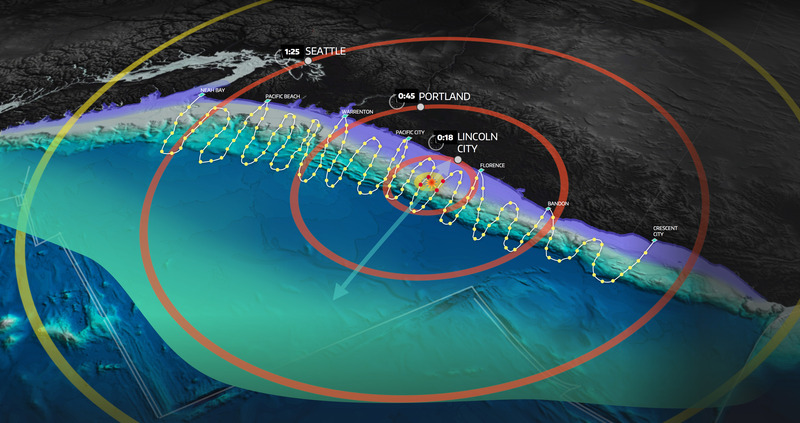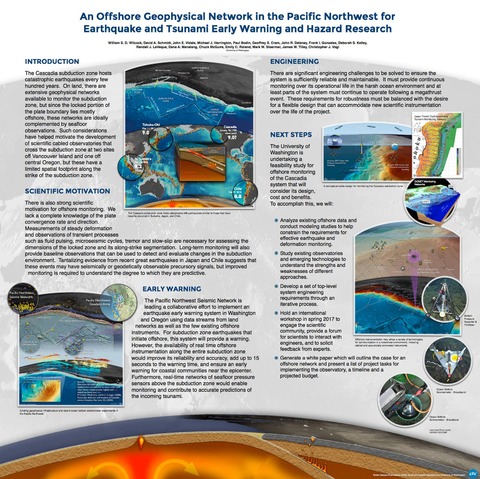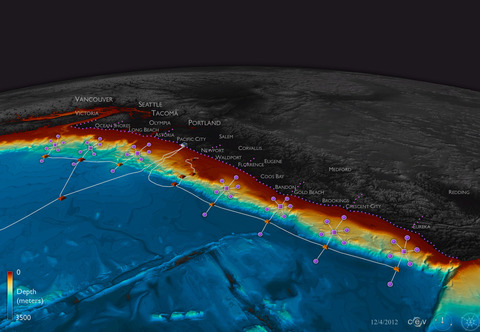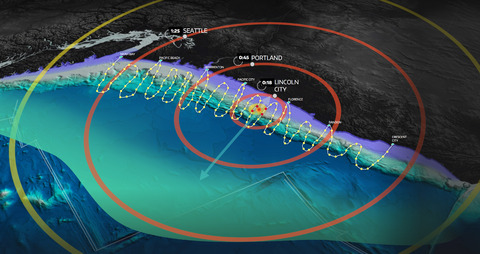2016 - 2019 Early Warning Feasibility Study
To help improve our early warning capabilities for offshore earthquakes and tsunamis and improve our capabilities to monitor the Cascadia subduction zone, we explored the design and cost-benefit of an offshore real-time network extending along the full length of the subduction zone. Support for this effort was provided by the Gordon and Betty Moore Foundation.
We undertook a feasibility study for offshore geophysical monitoring of the Cascadia subduction zone that considered its design, cost and benefits. To accomplish this, we:
- Analyzed existing offshore data and conducted modeling studies to help constrain the requirements for effective earthquake and deformation monitoring.
- Studied existing observatories and emerging technologies to understand the strengths and weaknesses of different approaches.
- Developed a set of top-level system engineering requirements through an iterative process.
- Held a workshop in spring 2017 to engage the scientific community, provide a forum for scientists to interact with engineers, and to solicit feedback from experts. The workshop discussed a strategy for engaging stakeholders outside the scientific community.
- Generated a white paper which outlines the case for an offshore network and presents a list of project tasks for implementing the observatory, a timeline and a projected budget.
Although our focus is Cascadia, we anticipate that our study will be a useful resource for groups who are planning offshore monitoring infrastructure in other subduction zones and we welcome interactions with such groups.





